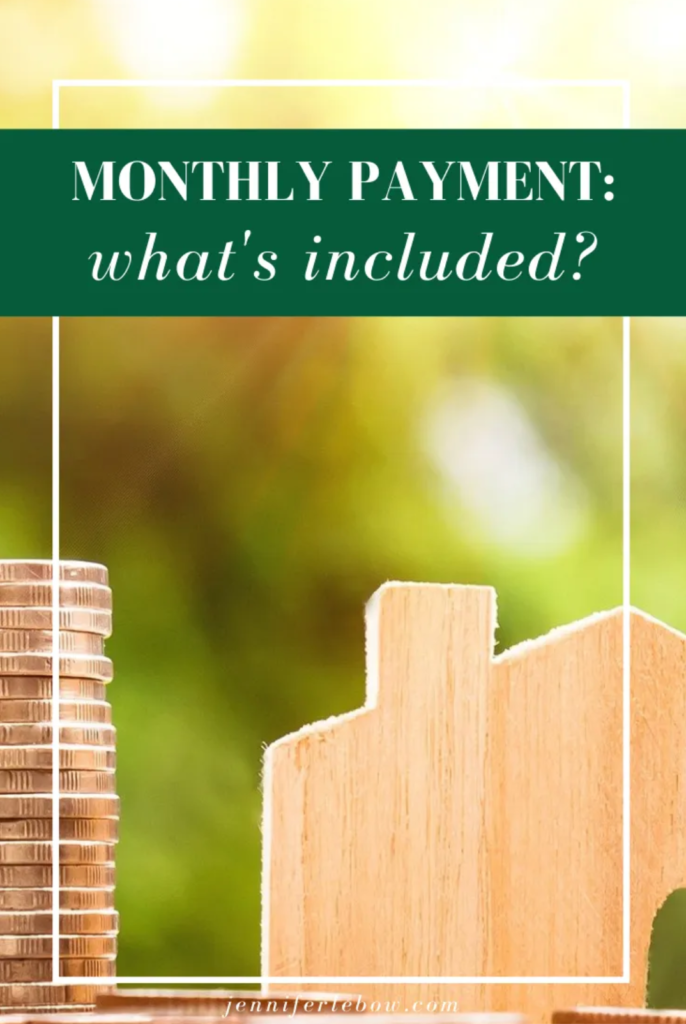
What comprises my mortgage payment?
For the purpose of this explanation, I am including real estate taxes and home owner’s insurance as part of the payment. However, it is NOT necessary to roll those fees into your monthly payment. If you prefer, you can pay them in lump sums as the bills come due. Most people prefer to have a consistent monthly payment, though, for budgeting reasons. This inclusive payment is referred to as a PITI payment (Principal, Interest, Taxes, Insurance. Note: closing costs are higher with a PITI payment as the bank escrows extra money to be sure there’s enough in the account to pay those tax and insurance bills in full when they come due.
Principal
The mortgage payment amount is possibly the most important factor for most home buyers in determining their housing budget. But not everyone is clear on what that monthly payment includes. For starters, it will always include your principal payment. The principal is the portion of the total loan amount that you are paying off. As you reduce the principal, you gain equity in the home. Be aware that while the principal/interest payment remains the same, the amount going to each category does not: at the beginning of the loan, a much larger portion of your payment is going toward interest. Later (say, around 20 years in), much more of it is going toward principal. It’s important to understand that as, in the event you sell the house very soon after buying it, you may have not effectively reduced what you owe on the principal.
Interest
Banks don’t lend you money because they are nice. Providing mortgages is a business. The interest is the part that the lender charges for lending you the money. It’s important to shop around for the best rate when you are getting ready to buy a house.
Mortgage Insurance
If you have borrowed more than 80% of the value of the house, you will also pay mortgage insurance (an extra fee). If it’s a conventional loan (as opposed to an FHA loan), the mortgage insurance will be temporary. It disappears once you’ve paid down the principal to the point that you have 20% equity in the property.
Real Estate Taxes
Real estate taxes include school, county and municipal taxes and they tend to increase slightly each year. Be sure to look at the taxes on any property you are interested in to calculate how much you need to budget to cover them. When you include your taxes in your monthly payment, the tax bills should be sent directly to the lender who pays the bill in full when it is due. It’s always wise to confirm with your lender that tax bills are being received (and paid) as you are responsible for them as far as the IRS is concerned.
Homeowner’s Insurance
If you have a mortgage, the bank will require you to carry home owner’s insurance. Depending on the coverage you select, and if you bundle it will car insurance, etc. rates will vary. Be careful when deciding on a policy that you are clear about the premium, deductible and coverage. Also, if the house is in a federal flood zone, you may be required to carry additional flood insurance. Your agent can tell you if the property is in a FEMA flood zone.
Other monthly fees to budget for
If the property you are buying has a condo or home owner’s association (HOA) fee, be sure to budget for that. These fees are not incorporated into your mortgage payment, but you need to be sure to earmark money for those bills. Your utilities are another monthly cost, though it varies month to month. Some utility providers offer plans that allow you to pay a flat fee every month (an average of your yearly usage) so that it’s easier for budgeting purposes. Finally, don’t forget that, as a home owner, there will be required maintenance. Most estimates range around 2-3% a year of the initial cost of the property. For more on home maintenance costs, see here and here.


Leave a Reply